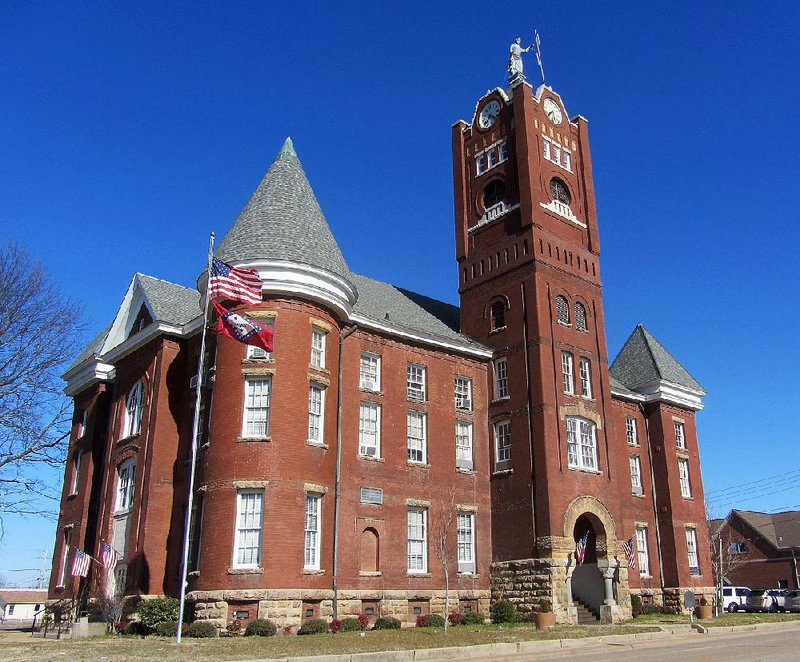NEWPORT -- Arkansas lacks the vintage pedigree of the original 13 Colonies with their landmarks dating to the 17th century. But the Natural State is not a historical desert either.
Even some communities hardly known as tourist magnets have a surprising number of sites notable enough to be honored on the National Register of Historic Places.
Newport is a good example. This northeast Arkansas city of almost 8,000 boasts 10 National Register listings of buildings and other properties with notable historical value. Their value stems from architectural distinction and other qualities. Most are worth at least a stop to admire and photograph.
The most impressive visually is the Jackson County Courthouse, built in 1892 and one of the state's oldest courthouses still serving its original purpose. The late Victorian brick building, at Main and Third streets, has a protruding three-story square tower that adds to its stately appearance. Oddly, the architect's name is unknown.
A block southeast, at Main and Fourth streets, First Presbyterian Church has a distinctive entrance set in a gable-ended section flanked by square pilasters and Tuscan columns. It was built in 1910 in Classical Revival style.
The Arkansas Bank & Trust Co. building, 103 Walnut St., looks a bit the worse for wear in its centennial year. But it still qualifies as an elegant example of the Classical Revival style. Finished in terra cotta on two sides and brick on the other two, it is one of Newport's most ornate commercial structures.
Railroading's importance to urban development at the turn of the 20th century is reflected in the National Register listing of the former Missouri-Pacific Railroad Depot, built in 1904 and topped by a hip roof. One notable touch is a telegrapher's bay extending above the roof line on the track side.
Two Newport residences grace the National Register. The Gregg House, 412 Pine St., was built in 1920 in Colonial Revival style. Notable are its front facade bays filled with paired sash windows. Empie-Van Dyke House, 403 Laurel St., dates to 1891 and was one of the first Queen Anne houses erected in Newport.
There's an Art Deco flair to Newport High School, 406 Wilkerson Drive. Completed in 1930, it is one of the few Art Deco designs by the firm of Thompson, Sanders and Ginnochio.
Newport American Legion Community Hut, built in 1924 in Remmel Park, is notable for the exposed log framing of its interior. A gable roof and a front-porch roof supported by log columns add to the look.
Given the city's origins as a river town, it makes sense that Newport Bridge is on the National Register. Built in 1930, it carries Arkansas 367 (old U.S. 67) over the White River. The main bridge section spans 400 feet.
Newport's 10th National Register site, south of town near the junction of U.S. 67 and Arkansas 14, requires an effort of imagination to bring alive its history. Now agricultural land, it was the location of bustling Erwin Auxiliary Army Airfield during World War II.
For more information, visit newportarcity.org. Visitors to Newport on Feb. 27 can attend the Delta Visual Arts Show from 10 a.m.-6 p.m. at Newport Business Resource Center, 201 Hazel St. Work by 181 artists from three states will be on exhibit.
Style on 02/16/2016
